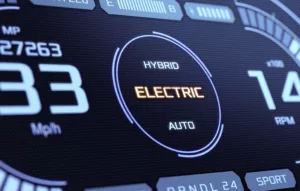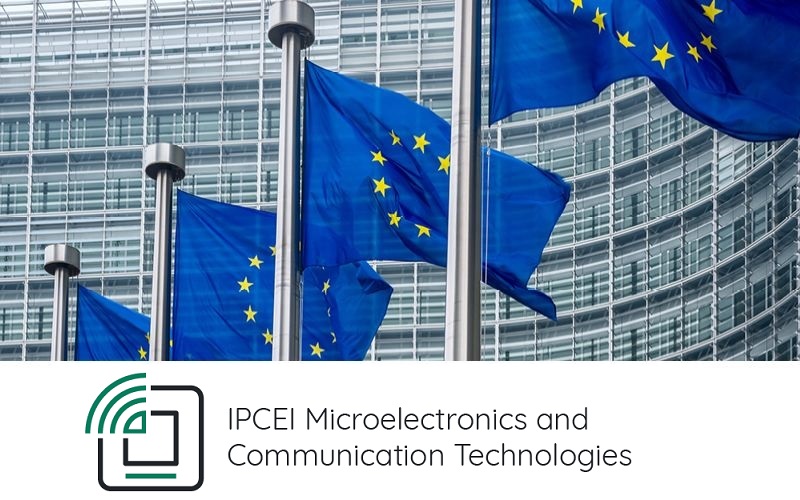Flexible and rigid-flexible printed circuit boards
Flexible printed circuit boards replace wires
Technological innovation of the kind we’re seeing in the medical sector or the automotive industry is mainly driven by the miniaturisation of electronic circuits. These days, a great many modern hearing aids, medical implants and LED car headlights make exacting demands of printed circuit boards, and require them to be installed in tiny spaces. AT&S can easily meet these demands by using flexible base materials. Flexible printed circuit boards can be bent or twisted during assembly, so they can be integrated into devices with almost any form factor and with space constraints. This is extremely important in devices like hearing aids and pacemakers.
Product benefits at a glance
- Adapting a printed circuit board to available space gives developers of devices and components greater design freedom.
- Flexible printed circuit boards allow circuits to be run on more than just one level. As the PCB can be bent or folded, a circuit can be fitted into the available 3D space as necessary.
- Flexible circuits can free up more surface area for memory chips and other components.
- Flexible printed circuit boards are driving further advances in miniaturisation.
- Connections formed with flexible printed circuit boards are extremely resistant, as opposed to those that rely on wiring.
The best of both worlds: rigid-flex printed circuit boards.
Rigid-flex printed circuit boards combine the benefits of flexible PCBs and their rigid counterparts by integrating both bendable and rigid areas. This allows for cost-effective custom solutions for device manufacturers. A flexible base material can be used to connect two rigid areas instead of plugs and cables. This means that the signal pathways remain short and miniaturisation can go further than before. Such connections are also significantly more robust and are better at withstanding mechanical stress. Rigid-flex printed circuit boards are mainly used for systems in cars and in industry.

Save space with flexible printed circuit boards.

These days, flexible printed circuit boards are used in all areas of electronics. They are usually bent, twisted or folded to fit into the product housing. Flexible PCBs are primarily used in place of wiring and plug connections or to create connections and configurations that would not be feasible with a rigid PCB.
AT&S manufactures flexible printed circuit boards mainly for the medical technology sector, where they are used in devices such as hearing aids and implants. The flexible installation options and high level of miniaturisation allow new functions to be added to such devices without increasing the size. For example, a modern hearing aid can now be connected to a doorbell, the TV or the wearer’s smartphone, thanks to the technology embedded in the compact design of a flexible PCB.
Economical: semi-flexible printed circuit boards.
The materials in semi-flexible printed circuit boards differ from those in flexible PCBs. A thin FR4 standard material can be used instead of the polyimide material used in flexible PCBs for a cost-effective alternative to “flex to install” applications. This FR4 material used limits the number of bending cycles and bending radius, but the material costs are lower than for fully flexible versions.
Because they make the most of the space available for a circuit, semi-flexible printed circuit boards are an especially appealing option in the automotive industry and for machine-to-machine communication, which is becoming increasingly important in industry.


Flex on aluminium.

The requirements for the shape and design of printed circuit boards have changed since LEDs have started being used in the car industry and for building lighting. Flexible printed circuit boards can be affixed to an aluminium heat sink, for instance, and then fitted with LEDs for installation in front headlights. This makes the most of the available space while providing for superb heat dissipation.
Technical data
| Product Characteristics | Specifications |
|---|---|
| Layer Count | Single sided to 2 layers |
| PCB Thickness | 75 – 800 µm |
| Copper Plating Holes | 20 µm |
| Min. Line/Spacing | 75/75 µm |
| Smallest Drill | 0.20 mm |
| Product Characteristics | Specifications |
|---|---|
| Layer Count | 2 layer PTH |
| PCB Thickness | 0.13 – 0.20 mm |
| Copper Plating Holes | 20 µm |
| Min. Line/Spacing | 150/150 µm |
| Smallest Drill | 0.28 mm |
| Product Characteristics | Specifications |
|---|---|
| Layer Count | 2 layers to 10 layers |
| PCB Thickness | 75 µm – 1600 µm |
| Copper Plating Holes | 20 µm |
| Min. Line/Spacing | 75/75 µm |
| Smallest Drill | 0.20 mm |
| Product Characteristics | Specifications |
|---|---|
| Layer Count | Single sided to 2 layers |
| PCB Thickness | 75 – 800 µm |
| Copper Plating Holes | 20 µm |
| Min. Line/Spacing | 75/75 µm |
| Smallest Drill | 0.20 mm |
- Combination of HDI rigid and HDI flex layers
- Stacked and staggered microvias on all layers
- Halogen-free base material (medium Tg) and polyimide
- SMD population
- Mechanical assembly in or on the housing
You may also be interested in these topics
As part of the "IPCEI on Microelectronics and Communication Technologies" funding project, the European Union is supporting research institutions and industrial partners in the development of technology that will enable a sustainable yet powerful data infrastructure for the continent. AT&S is involved in the project as a manufacturer of highly efficient substrates for the next generation of microchips. New research and production capacities in Leoben will play a decisive role in the modernization of the European microelectronics industry.
From ChatGPT to EU regulation of artificial intelligence: 2023 has ushered in a new phase of digitalization that will transform our society.
The resurrection of the Beatles for new songs and Sean Connery as the best James Bond ever in new films? This will soon no longer be a problem for the brave new world of AI.




